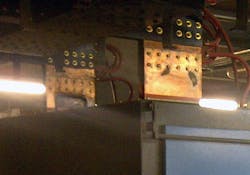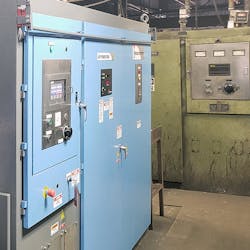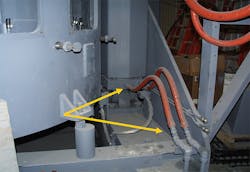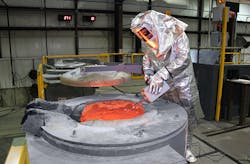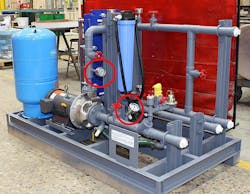Preventive maintenance (PM) commonly refers to the practice of regularly servicing equipment on a pre-determined schedule. Before any PM is done, regardless of which step, make sure appropriate PPE is worn and safety procedures are followed. For metalcasters operating induction melting furnaces, regular and planned maintenance is critical so that small issues do not develop into costly catastrophic failures, that the equipment performs better over its useful life. Some of the immediate advantages of preventive maintenance include:
• Extended useful life of assets, decreasing the need for replacement.
• Enhanced efficiency of the equipment, lowering power costs.
• Strengthened performance thanks to increased uptime.
• Contributes to consistent customer satisfaction with higher probability of meeting casting shipment commitments.
Depending on the type of equipment involved, PM service can be performed on a daily, monthly, and an annual bases. The annual PM service is much more involved than daily or monthly PM service. It generally requires a plant shutdown to perform all the required steps.
For the purpose of this article, the steps listed for the PM procedure are based on a daily and monthly schedule. Before operating on any induction equipment, make certain power is removed and appropriate lockout/tagout procedures are followed.
Before beginning any preventive maintenance on an induction power supply or furnace, you must complete the following safety procedures:
1. Turn off and lock out main interrupter switch(es.)
2. Turn off key switch.
3. Wait 5 minutes for capacitors to discharge.
4. Using appropriate PPE and instruments, check bus bar for zero voltage.
5. Ground all bus bars before working inside cabinet.
Now it is safe to work on the power supply or furnace.
PM for Power Supply Units
Daily program: Induction power supply units are essential equipment to any induction melting installation. These are five checks to be performed on a daily basis for power supply units:1. Check for internal and external water leakage.2. Check output bus bar for signs of severe discoloration.Monthly schedule: In addition to daily inspections, keeping induction power supply units operating reliably will require additional checks on a monthly schedule. These seven inspections must be performed every month on all power supply units:
1. Clean and lubricate the furnace selector switches with high-temperature grease to ease selection of furnace.
2. Retighten all electrical connections to prevent arcing.
3. Inspect all water connections for signs of leaks and cracks.
4. Check conductivity of water in the internal system, to prevent electrolysis.
5. Check and test all system interlocks to ensure safety devices are operating properly. Some safety interlocks include coil water flow interlock, water pressure switches/water temperature switch, and cabinet door interlock.
6. Visually check capacitors for oil leaks.
7. Visually check inside the cabinet for any signs of condensation, to prevent arcing.
In addition, be certain that you never use conductive hoses. All hose clamps must be fabricated in non-magnetic stainless steel. Never substitute with ferrous hardware.
PM for Induction Furnaces
Daily program: Induction furnaces, of course, are the focus of manufacturing activity for many foundries and diecasters, and thus also must be maintained in optimal condition for productivity. These are seven key daily checks to be performed on a coreless induction melting furnace:Monthly schedule: Coreless induction furnaces will require further attention than what is covered by daily inspections. These are four key monthly checks to perform on the furnace:
1. Inspect all water hoses for signs of leaks and cracks.
2. Inspect all water connections for signs of leaks.
3. Remove inspection panel covers. If applicable, remove any slag and metal chips that have accumulated inside.
4. Replace all inspection covers.
5. Tighten shunt bolts or tie rods per OEM procedures, depending on furnace type this will help to increase coil and refractory life.
PM for Water Cooling Systems
Daily program: Of course, water cooling is critical to the induction melting process, and the system that manages water cooling is essential to productivity. These are three routines to be performed daily:1. Check system pressurization to ensure that it matches OEM piping diagram.2. During winter, check the tower sump heater as well as outdoor piping insulation, to prevent freezing.3. Check system for leaks.Periodic review: Along with the daily inspection, there are seven details of the water cooling system that require more intermittent checkups:
1. Clean plates in heat exchanger for efficient cooling of water.
2. Remove and clean all strainers to guarantee they operate as intended.
3. Grease the bearing in the motors to prevent excess wear.
4. Check power supply loop water conductivity and replace filter cartridges when conductivity is above 10-20 microsiemens.
5. Check for proper glycol content for freeze protection in locations where applicable.
6. Check piping for corrosion or signs of leakage.
7. Tighten all hose clamps to prevent leaks.
8. Test emergency pump batteries to ensure reliability.
PM for Hydraulic Systems
The final aspect of induction melting installations that require preventive maintenance inspection are the hydraulic systems. Periodically inspect the filter clogging indicator to see if the filter needs to be replaced. The hydraulic reservoir fluid level indicator should also be checked; replenish fluid and check for leaks as needed. The breather should also be checked for cleanliness and ensure that it is oil free. Semi-annual plant shutdowns are an ideal time to drain and discard all fluid in the system. While empty, flush the lines, inspect the reservoir interior for cleanliness, and remove/clean the suction strainer. Once finished, we recommend refilling the system’s hydraulic fluid with new fluid. If that cannot be done, be sure to filter to 10 microns any fluid that is reused back into the tank.
Preventive maintenance is a crucial aspect of ensuring the longevity and efficiency of any induction melting system or equipment. Regularly monitoring and maintaining the equipment will reduce the likelihood of unexpected failures, minimize downtime, and extend the useful life of the equipment. In turn, this will save operating costs, increase productivity, and enhance safety.
The benefits of preventive maintenance for induction melting installations are clear, and it is a wise strategy for any metalcasting operation that relies on such equipment to observe these schedules. By prioritizing preventive maintenance, you will ensure that the equipment continues to perform at its best, providing reliable and safe operations for years to come.
Robert Keshecki is the Director of Sales – USA/Africa with Inductotherm Corp.










